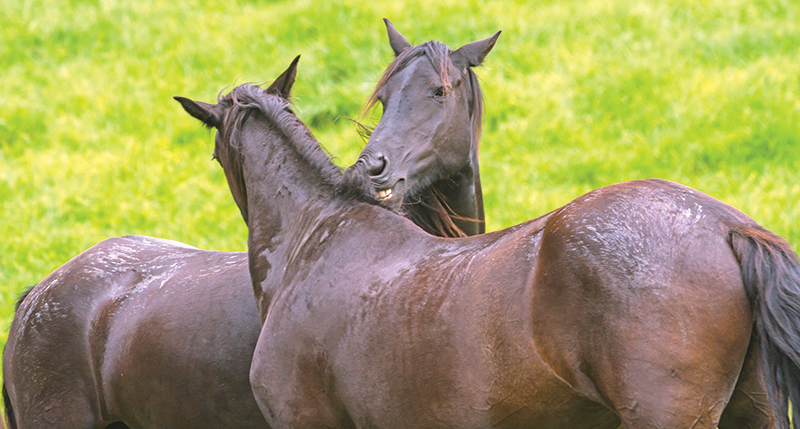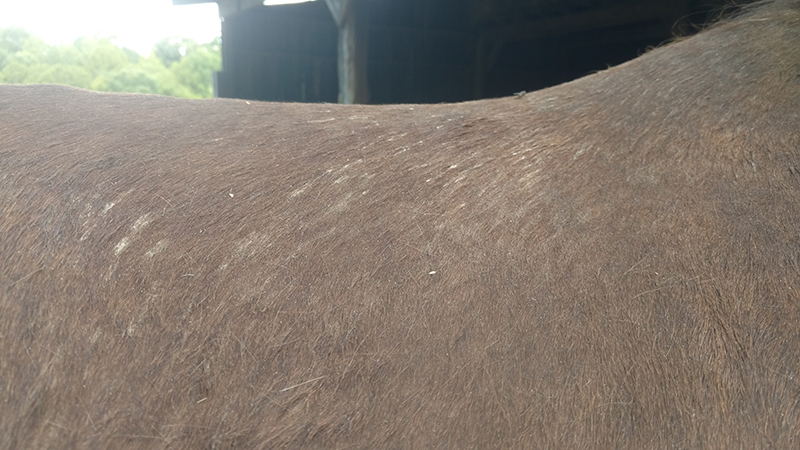
As a horse owner or caregiver, you hear a lot about ‘Rain Rot,” a skin condition common in the wet, hot, humid summer climate.
OVERVIEW
“Rain Rot” is a lay term used to describe dermatophilosis or infection of the skin with dermatophilus congolensis. The d. congolensis organism is a bacterium with many fungal characteristics, such as the development of mycelia (branch-like roots) and was even once thought to be a fungus. Another lay term for this condition is “Rain Scald”.
The natural habitat of this organism is unknown, but believed by many researchers to live in the soil.
The organism, which flourishes and breeds in moist, humid environments, is found living in the outer protective layer of the skin where it lies dormant until the skin is compromised, such as cuts, scrapes or biting insects. Once the skin is broken, the organism gains entry into the underlying sensitive layer of skin and branches out to form the outward signs we commonly refer to as rain rot.

The most classic cases of this skin infection appear as hard hairy crusts covering large areas of skin in predominantly pastured horses. These cases have patches of hardened plaque which form solid sheets attached to the underlying sensitive layer of skin.
Even with well managed and well-groomed horses, we often see a syndrome where small wheals (bumps) appear a day or so after clipping. These wheals are replaced over the next few days with small scabbed lesions that if forcibly plucked off, bring with them a tuft of hair and leave behind a small hairless spot. The lesions are generalized but are more numerous and concentrated over the rump and flanks and may appear to follow sweat and water runoff patterns down the flanks, forearms, gaskins and cannon areas.
TREATMENT
If the wheals are treated soon after their appearance, they usually respond to chlorhexidine medicated shampoo or surgical scrub treatment. Five to ten minutes of contact time with a two percent soap lather applied daily or every other day usually works within a week or so. However, once the tufts form, the hair will exfoliate leaving a bare, usually darker spot which will be present until the hair regrows. This may take weeks – long after the actual infection is cured.
For the more classic, serious, longstanding cases, (nowadays usually encountered in rescue situations,) a single dose of procaine penicillin or a course of an oral antibiotic may be necessary. This, along with an antimicrobial ointment, applied directly to the lesions will soften, gradually loosen and painlessly remove any firmly attached plaque.
Even though affected horses appear quite unsightly for some time, eventually the hair will regrow and a good hair coat will be fully restored.
PREVENTION
To prevent rain rot, provide clean, dry shelter to limit exposure to wet, moist environmental conditions. Practice a good grooming regimen and do not share grooming equipment with affected horses as the infection is easily spread between horses. Disinfect clipper blades after each use and apply plenty of fly spray to reduce attacks from biting insects.
Common sense and good management will go a long way in keeping your horse’s coat shiny, healthy and free of rain rot during the wet, humid summer months. After all, a healthy horse is a happy horse!
